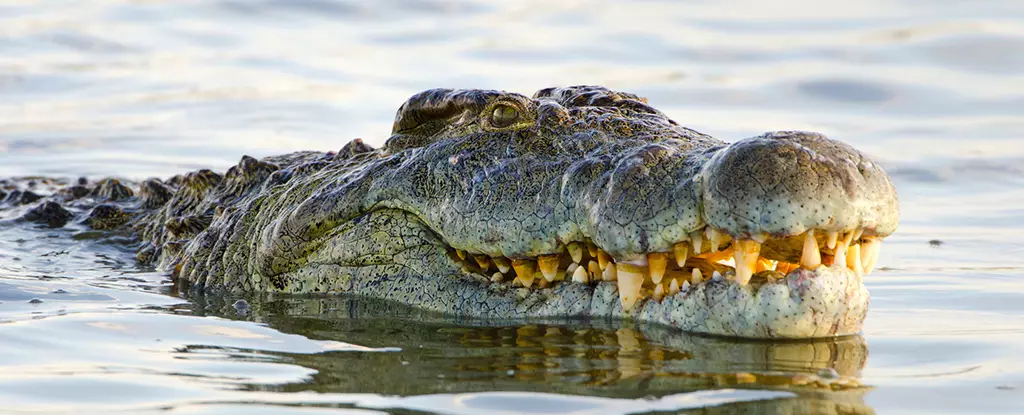The crocodile, a formidable predator that has roamed the Earth for millions of years, boasts an unusual yet captivating feature: its smile, characterized by a series of intricate, wrinkled scales across its snout. The evolution of these defining traits has piqued the interest of scientists for years, prompting research into the underlying biological and mechanical mechanisms that shape the reptile’s distinctive appearance. Recent studies have led to groundbreaking revelations about how these scales form during embryonic development, shedding light on the complex interplay between biology and mechanics in shaping one of nature’s most iconic features.
A fundamental question arises: how does a seemingly straightforward reptilian feature like a smile become entwined with intricate biological processes? Researchers from the Laboratory of Artificial and Natural Evolution (LANE) at the University of Geneva undertook this investigation to understand the formation of the crocodile’s head scales. While earlier research led by Michel Milinkovitch proposed that the scales originated from a unique mechanical process linked to tensile stress—similar to stretch marks in humans—the recent study redirected focus to the role of compressive mechanical instabilities.
The discovery of how scales evolve during embryonic development is essential to understanding crocodilian diversity. It was revealed that the head scales on crocodiles form from an underlying tissue dynamic, where skin growth outpaces the growth of the bone structure beneath. This mismatch creates a fascinating aesthetic divergence that varies among species, suggesting that the diverse head-scale patterns across different crocodilians are likely products of evolutionary adaptations influenced by unique skin growth patterns.
The journey into the embryo is fraught with challenges, but these researchers ingeniously employed a method known as epidermal growth factor (EGF) injection into Nile crocodile eggs. This protein amplifies the stiffness of the epidermis and accelerates skin growth, revealing an exaggerated pattern formation in the developing scales. The EGF-treated embryos demonstrated an intricate layering of head scales reminiscent of labyrinthine structures, indicating the intricate dynamics at play. What remains remarkable is the observation that as these prematurely developed scales mature, they align closely with head-scale patterns found in caimans, suggesting an evolutionary connection among different crocodilian species.
This revelation hints at a far more complicated picture where head scale morphology serves as an invaluable marker for understanding the evolutionary trajectories of crocodilians. The interplay between mechanical and biological factors provides insights into not only the physical appearance of these reptiles but also their adaptive advantages in their respective habitats.
In unraveling the scales of the crocodile, the researchers have highlighted an intriguing story of natural engineering. The conventional view of biological growth processes has been significantly nuanced through this research. The finding that embryonic skin grows faster than the skeletal structure beneath it draws parallels with clades in other vertebrates, hinting at a set of evolutionary principles that extend beyond crocodilians.
The distinctive patterns resulting from this growth disparity create a resilience that has likely contributed to the survival and adaptability of these creatures throughout evolutionary history. Rather than experiencing the complications of rapid growth associated with mammals, crocodilians exhibit a unique physiological response to their developmental stages, resulting in an iconic appearance that has been honed by the pressures of natural selection.
As the study of crocodilian biology advances, the understanding of their unique features, such as the distinctive smile, becomes increasingly complex. The combination of mechanical engineering and biological processes symbolizes nature’s elegance in crafting solutions to survival. Each wrinkle and fold in the croc’s snout tells a captivating story of adaptation and resilience. The research conducted at LANE offers a glimpse into the intricate workings of nature’s blueprint, revealing that even the simplest of characteristics can be a testament to an evolutionary journey marked by millions of years of adaptation, survival, and transformation. The crocodile—with its enigmatic smile—remains a living testament to the elegance of evolutionary design.


Leave a Reply